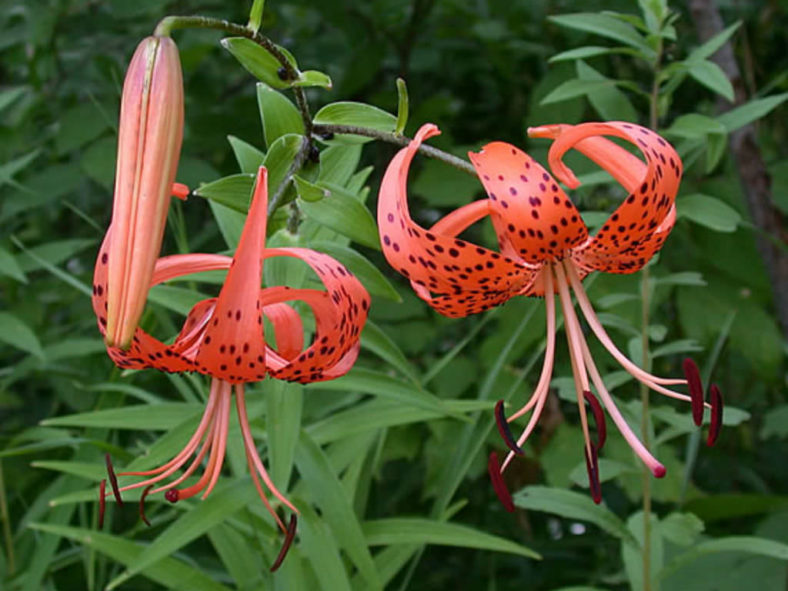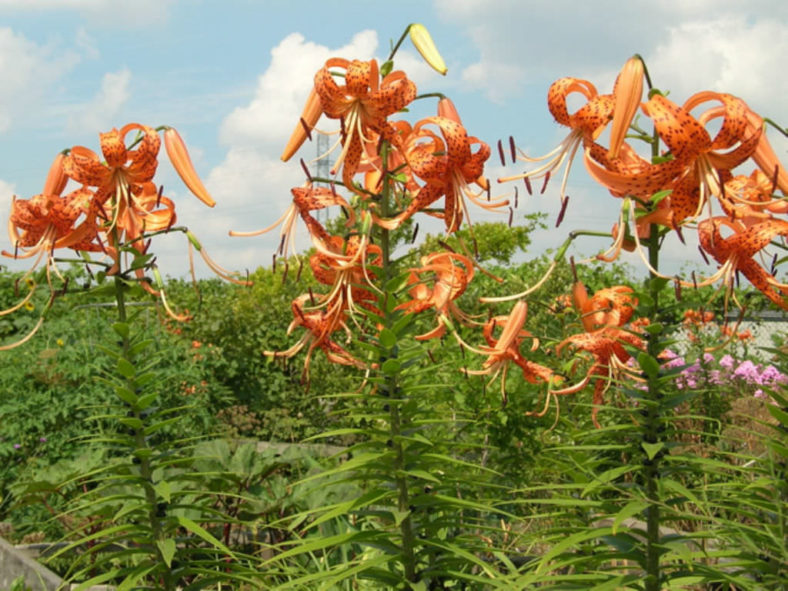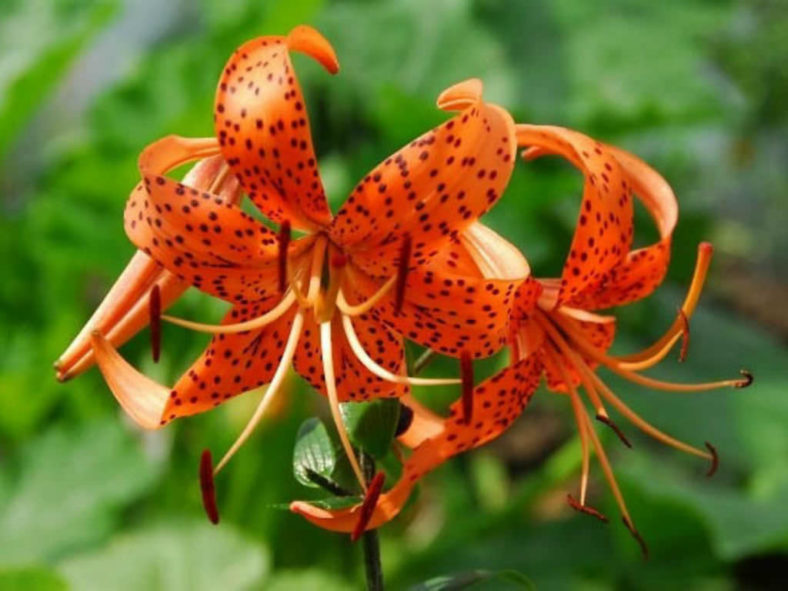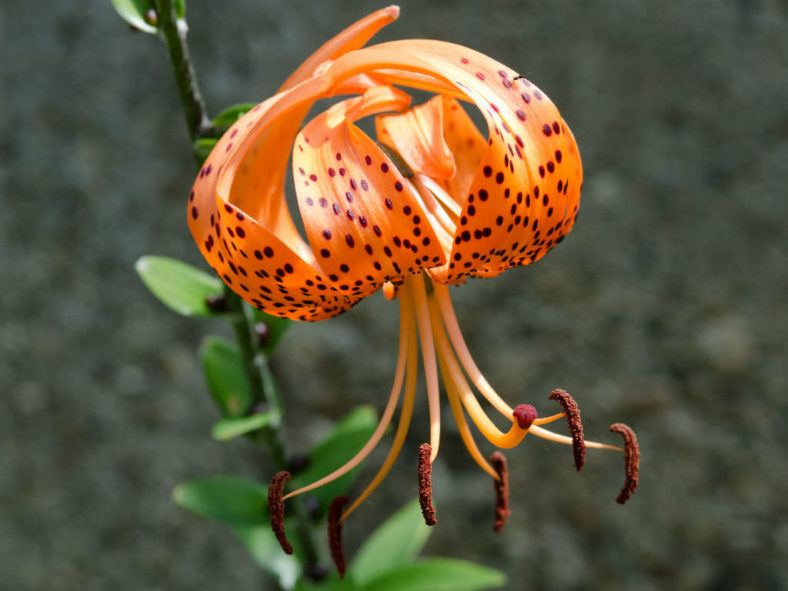Scientific Name
Lilium lancifolium Thunb.
Common Name(s)
Tiger Lily
Synonym(s)
Lilium leopoldii, Lilium lishmannii, Lilium tigrinum
Scientific Classification
Family: Liliaceae
Subfamily: Lilioideae
Tribe: Lilieae
Genus: Lilium
Origin
This species is native to China, Japan, Korea, and the Russian Far East.
Flower
Color: Orange
Bloom Time: Mid to late summer
Description
Lilium lancifolium is one of a very small number of species that produce aerial bulblets, known as bulbils, in the leaf axils along the stem. These can be used to propagate the plant.
The flowers are bright, showy orange, and covered with black and deep crimson spots, giving the appearance of the tiger's skin. Like other true lilies, the flowers are borne on an erect, up to 6.7 feet (2 m) tall stem clothed with more or less linear leaves, which are up to 4 inches (10 cm) long and up to 0.8 inches (2 cm) wide. Flowers on the plant last for a short period before they wither and are replaced by newer flowers.

Hardiness
USDA hardiness zone 3a to 9b: from −40 °F (−40 °C to 30 °F (−1.1 °C).
How to Grow and Care
Though lilies look like they'd be fussy plants, they are actually very easy to grow. They're not particular about soil type or pH, and they grow well in full sun, part sun, dappled shade, and even light shade.
Plant lilies as soon as you get them, either in the fall or the spring. Because the bulbs lack the papery covering (known as a "tunic") common to other hardy bulbs, they can dry out quickly in storage.
Even more than other bulbs, lilies demand well-drained soil. Dig the spot where you plan to plant lilies to a depth of at least 12 inches (30 cm), remove rocks, and add organic matter, such as leaf mold or peat moss, to improve the soil's structure and drainage. Like other bulbs, lilies appreciate a little bone meal scratched at the bottom of the planting hole but do not really require other fertilizers at planting time. Instead, wait until the bulbs send up green leaves and then sprinkle a complete organic fertilizer around the plant and water it in.
See more at How to Grow and Care for Lilies.
Links
- Back to genus Lilium
- Plantpedia: Browse flowering plants by Scientific Name, Common Name, Genus, Family, USDA Hardiness Zone, or Origin
Photo Gallery
Click on a photo to see a larger version.




